The automotive landscape of the 1970s and 1980s was a fascinating period of transition. Emerging from the muscle car era and navigating through oil crises, changing safety regulations, and the dawn of computerization, automakers produced some of the most distinctive and memorable vehicles ever to hit American roads. These cars captured our imaginations with their unique styling and features, yet many have become notorious for their mechanical quirks, reliability issues, and sometimes dangerous design flaws. Let’s take a nostalgic drive through 13 iconic cars that were simultaneously the coolest and most problematic vehicles of their day.
1. Ford Pinto (1971-1980)
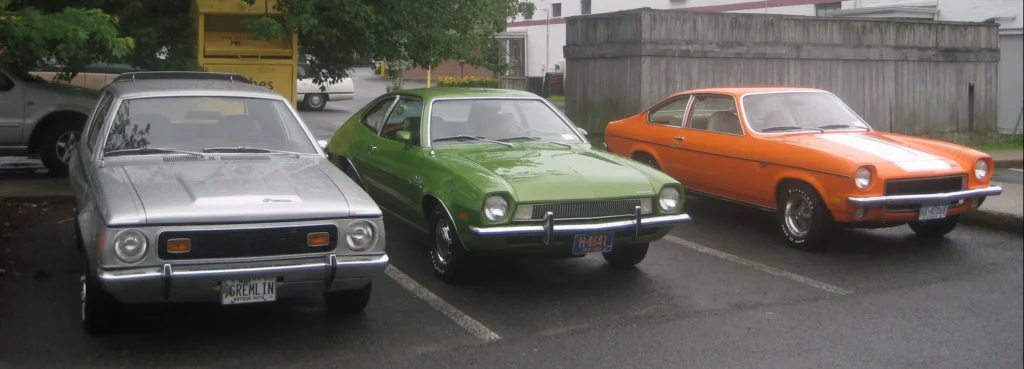
The Pinto represented Ford’s urgent response to the small-car invasion from Japan, featuring crisp styling, a practical hatchback design, and affordable pricing that made it instantly popular among young drivers and small families. Its nimble handling and economical four-cylinder engine arrived at the perfect moment as America faced its first major oil crisis, offering a stylish alternative to the gas-guzzlers that had previously dominated American roads. The Pinto’s sporty proportions and zippy performance made it feel like a European-inspired driver’s car rather than a budget economy vehicle. HowStuffWorks goes into a deeper breakdown of these explosive stories and the reasons for existing.
Unfortunately, the Pinto became infamous for one of the most notorious design flaws in automotive history—a vulnerable fuel tank positioned between the rear axle and bumper that could rupture during rear-end collisions, potentially causing catastrophic fires. The subsequent scandal, including Ford’s infamous cost-benefit analysis memo weighing safety modifications against potential lawsuit costs, permanently damaged the car’s reputation and led to major reforms in automotive safety standards. Despite selling over 3 million units, the Pinto is now remembered more for its safety controversy than for its otherwise practical and economical design.
2. AMC Pacer (1975-1980)
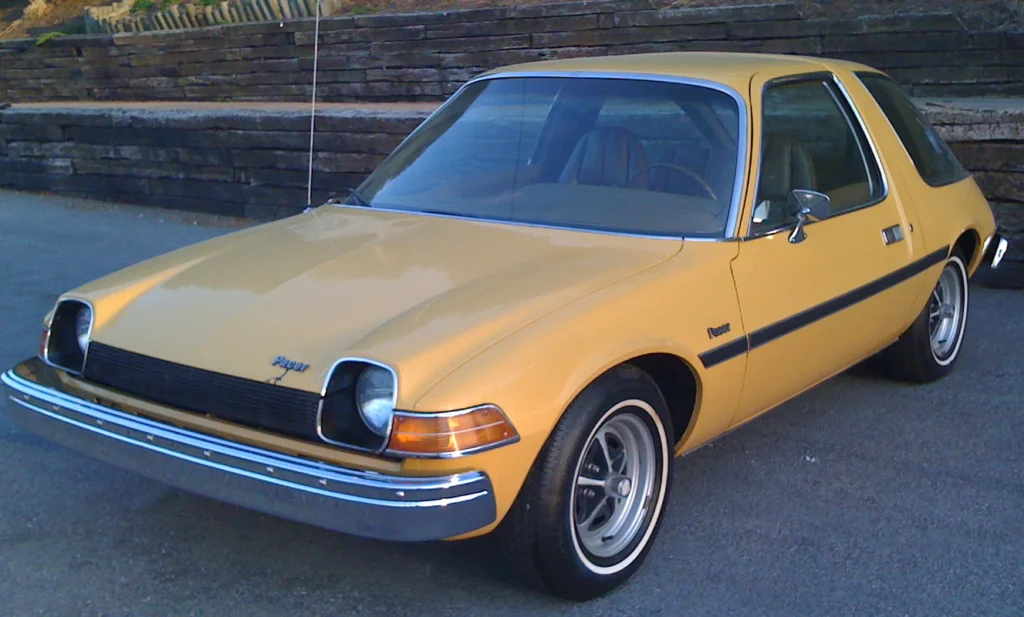
The “fish bowl on wheels” stood out with its futuristic bubble-like design featuring an asymmetrical door layout and an unprecedented glass-to-sheet metal ratio that made it look like nothing else on the road. Designer Richard Teague created what AMC called “the first wide small car,” with a cabin nearly as wide as full-sized sedans but with a much shorter length, creating unique proportions that automotive journalists described as everything from “bold” to “bizarre.” The Pacer gained additional cultural cachet through its memorable appearance in “Wayne’s World,” cementing its status as an icon of quirky ’70s design. In fact, Motor Authority reports, that same vehicle sold for over $70,000 at auction in recent years.
However, the Pacer’s innovations came with significant drawbacks—its greenhouse effect interior turned the car into a sweltering sauna on sunny days, while the heavy glass contributed to the car’s substantial weight problem and poor fuel economy. The original design called for a lightweight Wankel rotary engine, but when that option disappeared, AMC was forced to use their existing straight-six engines, creating balance and weight distribution issues that hampered handling. Reliability problems, rust issues, and underpowered performance relative to the car’s weight made the Pacer more of a novelty than a practical daily driver despite its conceptual innovation.
3. Chevrolet Corvette (C3) (1968-1982)
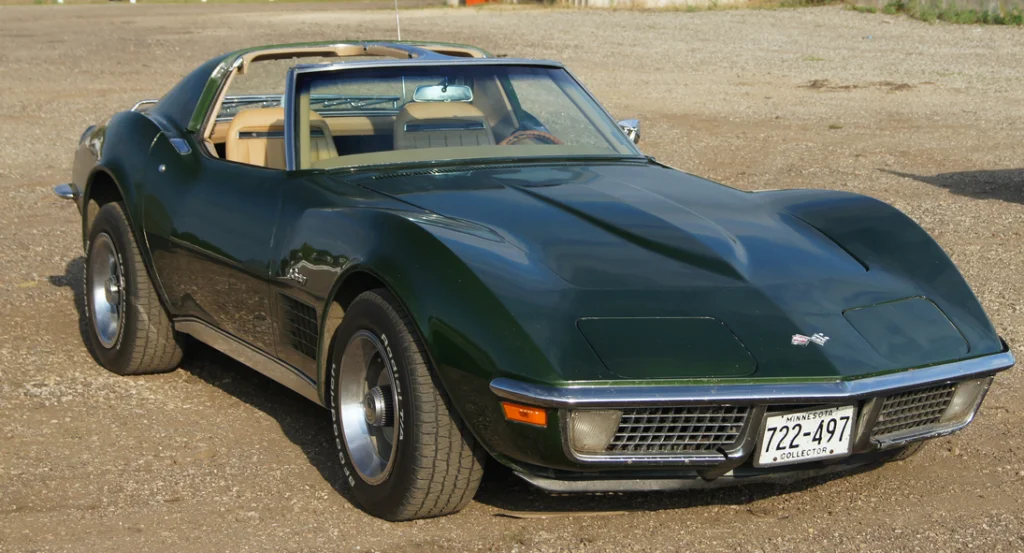
The third-generation Corvette maintained its status as America’s sports car with its dramatic, swooping body lines inspired by the Mako Shark II concept car, creating one of the most visually distinctive vehicles ever to wear the Corvette badge. Early C3 models carried over the powerful engines from the muscle car era, with options like the 435-horsepower L88 big-block V8 providing exhilarating performance to match the car’s exotic looks. The car’s popularity soared during this period, appearing prominently in television shows like “Corvette Summer” and becoming a status symbol for successful professionals across America. Though, Hagerty offers a blunt but forgiving assessment of just how well this program did among viewers.
However, the C3 Corvette suffered significantly as power declined throughout the 1970s in response to emissions regulations and the fuel crisis, with some later models producing as little as 165 horsepower—a shadow of their former glory. Quality control issues plagued the fiberglass bodies, which were prone to stress cracks, waviness, and improper fitting of panels, while the interior ergonomics were notoriously awkward with difficult entry and exit. The long production run of the C3 meant that later models felt increasingly dated as the 1980s progressed, with the platform ultimately becoming a symbol of how government regulations and corporate complacency had neutered American performance cars.
4. DeLorean DMC-12 (1981-1983)
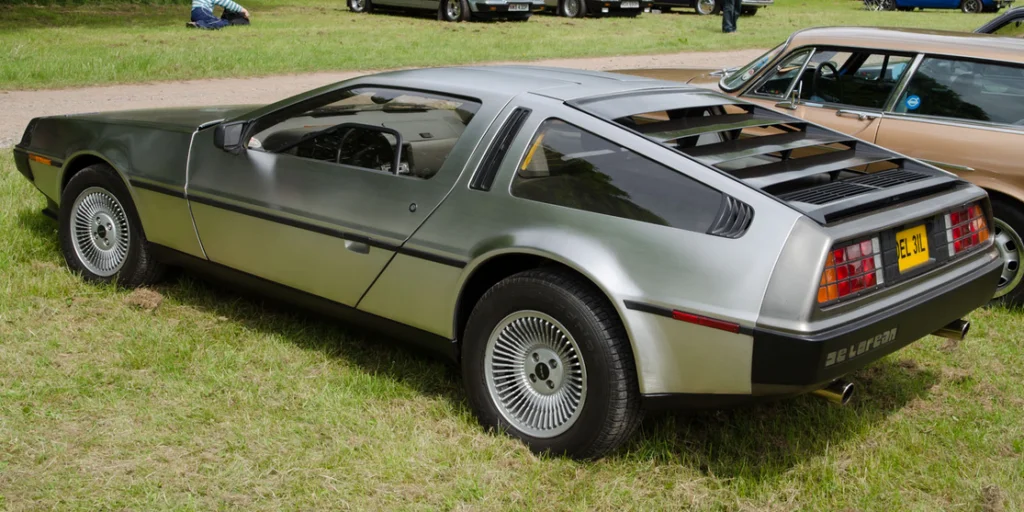
Before becoming a time machine in “Back to the Future,” the DeLorean captivated the public with its brushed stainless steel body panels, gull-wing doors, and the celebrity status of its creator, former GM executive John DeLorean. The car’s angular wedge shape, designed by the legendary Giorgetto Giugiaro, looked like it had arrived from the future, while its unpainted exterior created a distinctive metallic sheen unlike anything else on the road. The DMC-12’s exotic appearance belied its relatively affordable price point, promising American drivers European exotic styling without the stratospheric cost.
Behind the futuristic façade, however, the DeLorean was plagued by numerous problems, starting with severe underpowering from its 130-horsepower PRV V6 engine that delivered sluggish acceleration completely at odds with the car’s spaceship looks. Build quality issues were rampant, with electrical problems, door alignment difficulties, and the nearly impossible task of keeping those signature stainless steel panels looking clean and fingerprint-free. The company’s spectacular collapse amidst John DeLorean’s cocaine trafficking arrest (though he was later acquitted) brought production to an abrupt halt after only about 9,000 units, turning what might have been a footnote in automotive history into a cult classic whose troubled development couldn’t diminish its cultural impact.
5. Cadillac Eldorado (1971-1978)
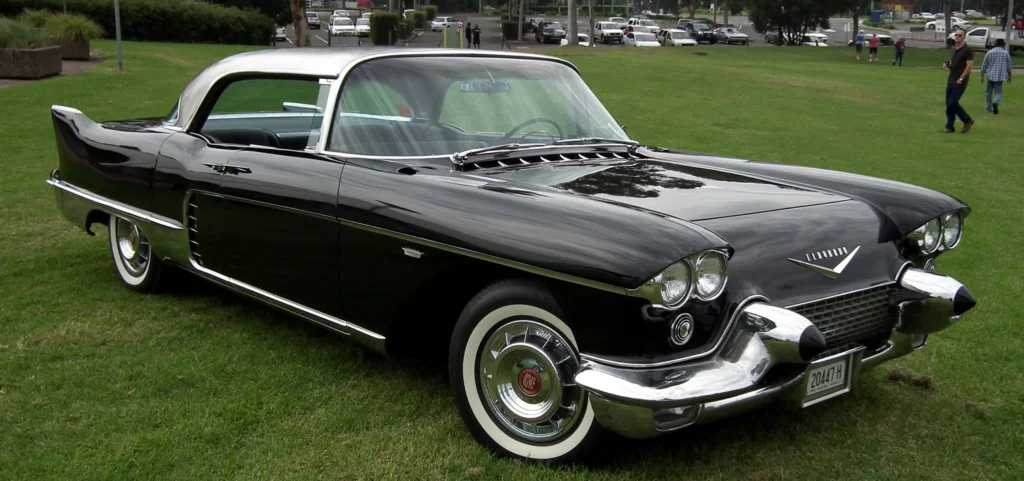
The ninth-generation Eldorado represented peak American luxury excess, stretching nearly 19 feet long with a massive 8.2-liter V8 engine—the largest engine installed in a postwar production car. Its distinctive styling featured sharp lines, a formal roofline, and a dramatically long hood, creating an imposing presence that announced its driver’s success and status. The Eldorado’s sumptuous interior featured leather seating, wood trim, and every luxury amenity Cadillac could engineer, from automatic climate control to a sophisticated stereo system.
Despite its impressive specifications, this Eldorado generation suffered from notorious quality control issues as General Motors prioritized cost-cutting over craftsmanship. The massive engine produced a disappointing 190 horsepower at its lowest point while consuming fuel at an alarming rate of 8-10 miles per gallon. Problems with the complex electronic systems, climate control failures, and transmission issues became increasingly common as these vehicles aged. The Eldorado embodied the mismatch between American automakers’ traditional focus on size and luxury versus the market’s growing demand for efficiency and reliability, making it simultaneously desirable and deeply flawed.
6. Chevrolet Chevette (1976-1987)
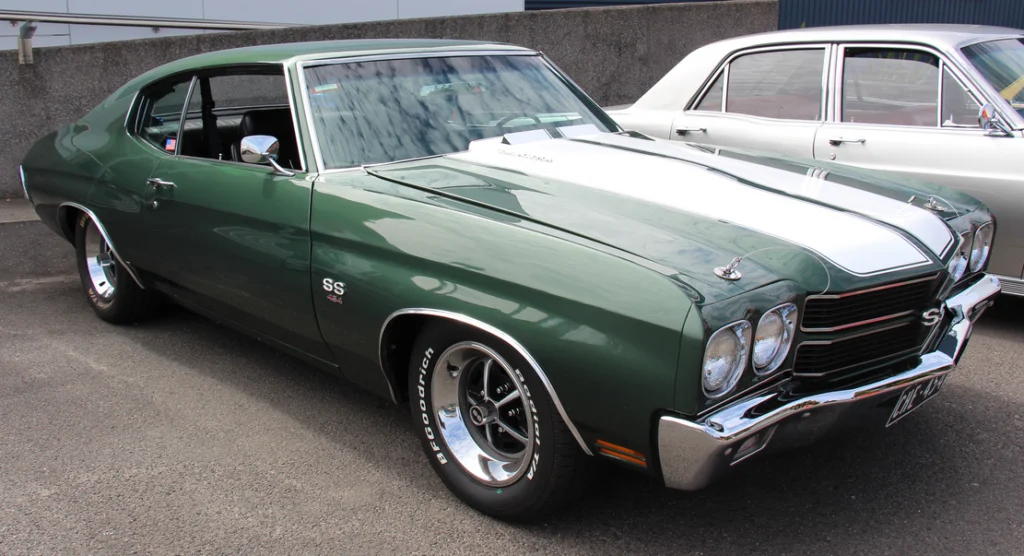
As America’s answer to rising gas prices and increasing small car competition from Japan, the Chevette became one of General Motors’ best-selling models by offering bare-bones transportation at an affordable price point. The simple, rear-wheel-drive subcompact featured clean styling, excellent fuel economy, and easy maintenance—qualities that made it practical for budget-conscious consumers during economically challenging times. Its small footprint made it easy to park in urban environments, while its straightforward mechanicals meant even amateur mechanics could perform basic maintenance.
Unfortunately, the Chevette embodied nearly every stereotype about American small cars being penalty boxes, with anemic performance from its 51-70 horsepower engines, a crude interior filled with hard plastics, and a driving experience that Car and Driver magazine famously described as “a slightly softer version of a power mower.” Rust problems were endemic, particularly around the rear hatchback and fenders, while structural integrity left much to be desired by modern safety standards. The car’s 11-year production run with minimal updates meant later models felt hopelessly outdated against increasingly sophisticated Japanese competitors, yet GM continued selling the automotive equivalent of white bread long after the recipe had gone stale.
7. Lamborghini Countach (1974-1990)
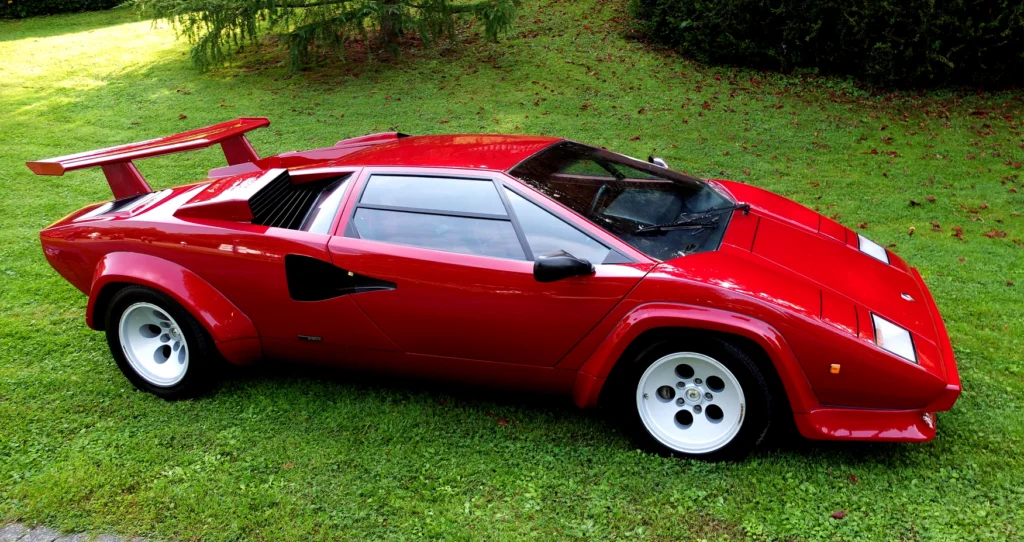
No car exemplified exotic automotive excitement in the ’70s and ’80s quite like the Countach, with its outrageous wedge-shaped design, scissor doors, and fighter jet-inspired cockpit that adorned countless bedroom posters. Designer Marcello Gandini created perhaps the most dramatic automotive shape of all time, featuring angles and lines so extreme they barely seemed functional. The shrieking V12 engine mounted behind the driver produced an intoxicating sound that matched the car’s visual drama, while performance figures remained impressive even by today’s standards.
Living with the Countach, however, was an exercise in compromise and frustration for even the most dedicated supercar enthusiasts. The cabin was painfully cramped, with a pedal box so tight that drivers often removed their shoes to operate the controls. Visibility was virtually non-existent, with drivers typically opening the scissor doors and sitting on the sill to reverse the car. The heavy clutch, unassisted steering, and challenging gearbox made the Countach exhausting to drive, while maintenance costs and frequency were legendary even among exotic car owners. The Countach perfectly embodied the “poster car” paradox—achingly desirable to look at and dream about, yet almost unbearable to live with in reality.
8. Ford Mustang II (1974-1978)
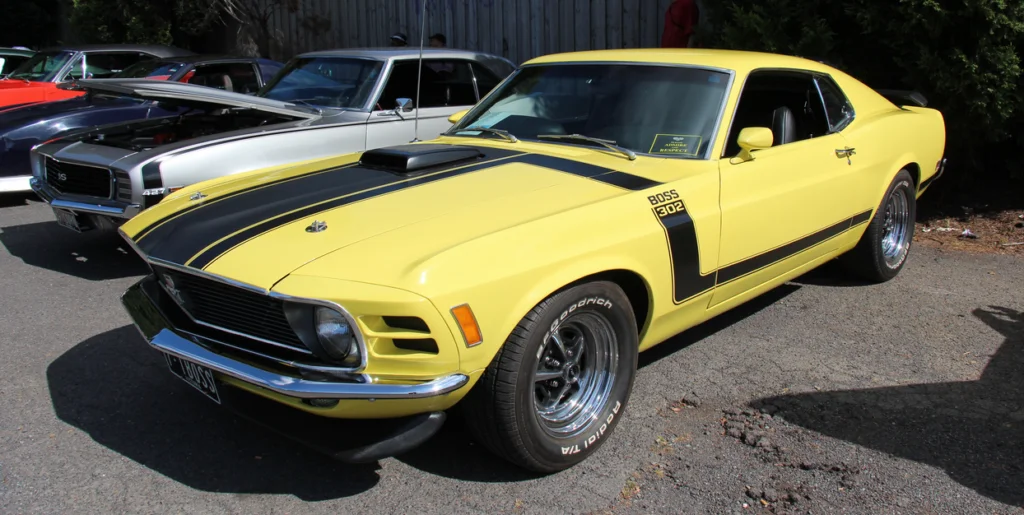
Following the bloated 1971-1973 models, the Mustang II represented Ford’s return to the original Mustang concept—a smaller, more efficient sporty car for the fuel-conscious era. Its timing couldn’t have been better, launching just as the 1973 oil crisis hit and immediately becoming a sales success despite enthusiast criticism. The car offered attractive styling that maintained Mustang design cues while shrinking to a more practical size, and higher-trim models like the Ghia and King Cobra provided distinctive looks with luxury or performance pretensions.
Despite its commercial success, the Mustang II has been maligned by enthusiasts for sharing its platform with the humble Pinto and offering dramatically reduced performance compared to its predecessors. The base four-cylinder engine produced a mere 88 horsepower, while even the optional V8 managed only 139 horsepower—figures that made Mustang’s performance heritage seem like a distant memory. Build quality issues, rust problems, and the car’s association with the malaise era have made the Mustang II the black sheep of the Mustang family despite Ford selling over 1.1 million units. Time has somewhat rehabilitated its reputation as collectors have recognized its historical importance in keeping the Mustang nameplate alive during a challenging period for American performance cars.
9. Aston Martin Lagonda (1976-1990)
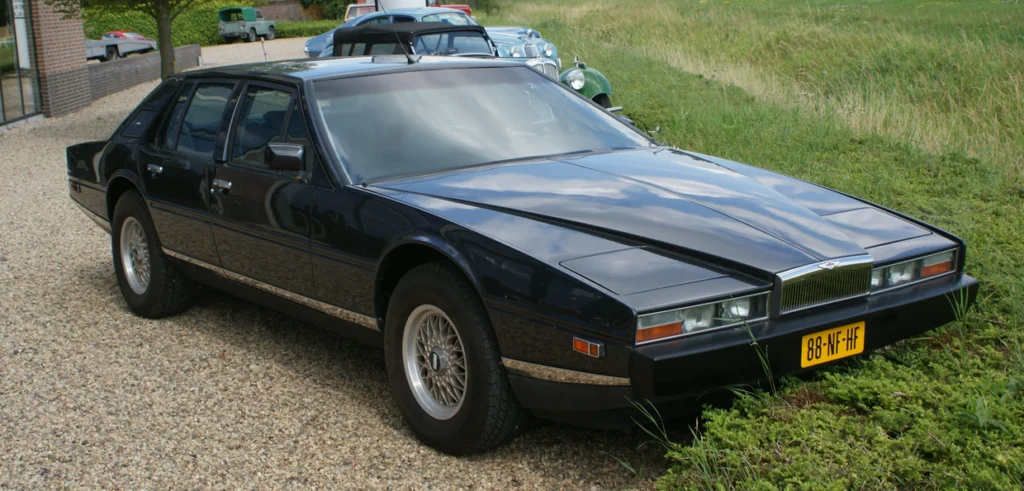
The Lagonda sedan shocked the automotive world with its radically angular, wedge-shaped design and industry-first digital dashboard featuring cathode ray tube (CRT) displays and touch-sensitive controls. Designer William Towns created what looked like a spaceship for the road, with a dramatically low hood, hidden headlamps, and a razor-edge aesthetic that made contemporary luxury sedans appear hopelessly outdated by comparison. The handbuilt interior featured the finest materials, with extensive leather and wood creating a bespoke environment for the ultra-wealthy.
The Lagonda’s futuristic electronics proved catastrophically unreliable, with the digital dashboard alone containing technology that pushed the boundaries of what was possible in the late ’70s. The complex systems frequently failed, sometimes leaving drivers without functioning instrumentation. Each car required about 2,200 hours to build by hand, contributing to astronomical cost overruns and a price tag that made it one of the most expensive cars in the world. The 5.3-liter V8 engine delivered adequate but not exceptional performance while consuming fuel at a prodigious rate, making the Lagonda a car whose dramatic styling wrote checks its engineering simply couldn’t cash.
10. Cadillac Cimarron (1982-1988)
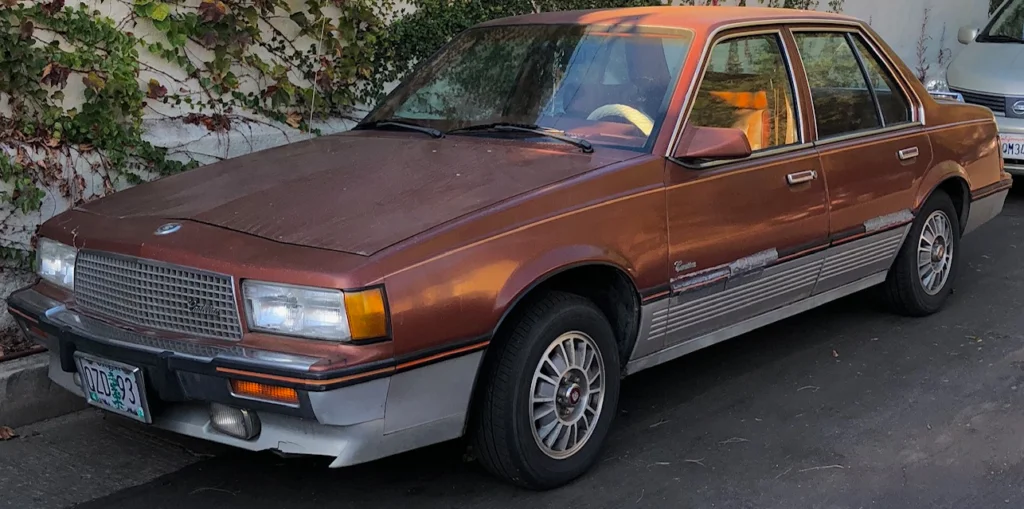
The Cimarron represented Cadillac’s first foray into the compact luxury market as American automakers belatedly responded to the growing popularity of smaller European luxury cars like the BMW 3-Series. On paper, the concept made perfect sense—a smaller, more efficient Cadillac that would attract younger buyers while maintaining the brand’s luxury reputation. The car offered standard leather seating, alloy wheels, and premium sound systems in a size that was easier to park and less expensive to fuel than traditional Cadillacs.
In execution, the Cimarron became one of the most notorious examples of badge engineering in automotive history—a lightly disguised Chevrolet Cavalier with minimal changes that fooled absolutely no one. The initial four-cylinder engine produced an embarrassing 88 horsepower, completely at odds with Cadillac’s luxury image. The $12,000 starting price represented nearly twice the cost of the Cavalier it was based on, without delivering twice the car. The Cimarron damaged Cadillac’s brand reputation so severely that the company spent decades trying to recover, serving as a cautionary tale about the dangers of cynical marketing and shortcut product development in the luxury market.
11. Ferrari 308 GTB/GTS (1975-1985)
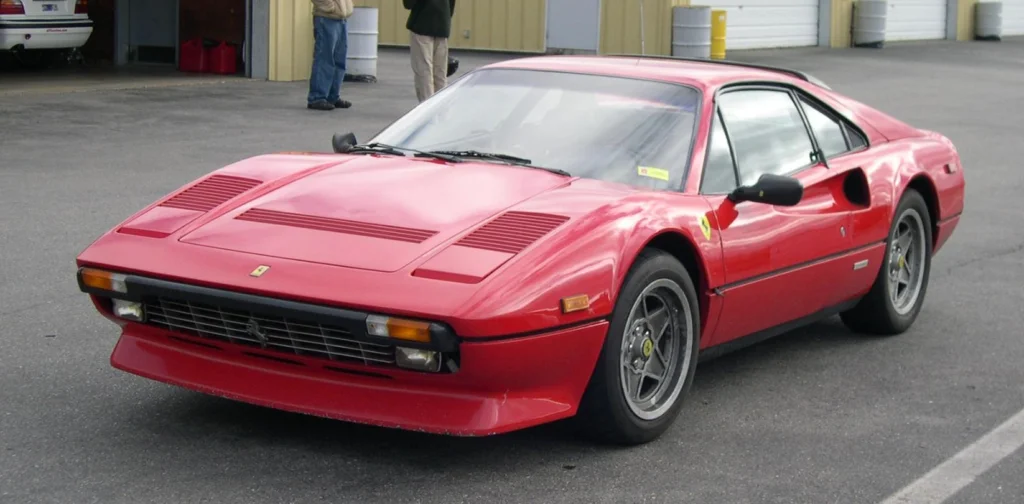
The 308 achieved pop culture immortality as Thomas Magnum’s ride in the television series “Magnum, P.I.,” featuring a perfectly proportioned Pininfarina design that many consider among the most beautiful Ferraris ever created. Its mid-engine layout, distinctive side strakes, and compact dimensions created a pure sports car experience that was more accessible than Ferrari’s flagship models. The gated manual shifter and open-top driving experience of the GTS model delivered the quintessential Italian sports car sensation, complete with the glorious soundtrack of the V8 engine mounted just behind the driver’s ears.
Despite its stunning design, the 308 suffered from severe power limitations during the emissions-constrained late ’70s, with U.S. models producing as little as 205 horsepower—far less than its exotic appearance suggested. Reliability issues were legendary, with electrical problems, expensive maintenance requirements, and the dreaded timing belt service that required engine removal. The car’s construction included significant fiberglass components in early models that were prone to cracking and crazing, while later steel-bodied versions faced serious rust issues. The complex Weber carburetors required frequent adjustment by specialized mechanics, making ownership a commitment to intimate relationships with Ferrari technicians.
12. Pontiac Fiero (1984-1988)
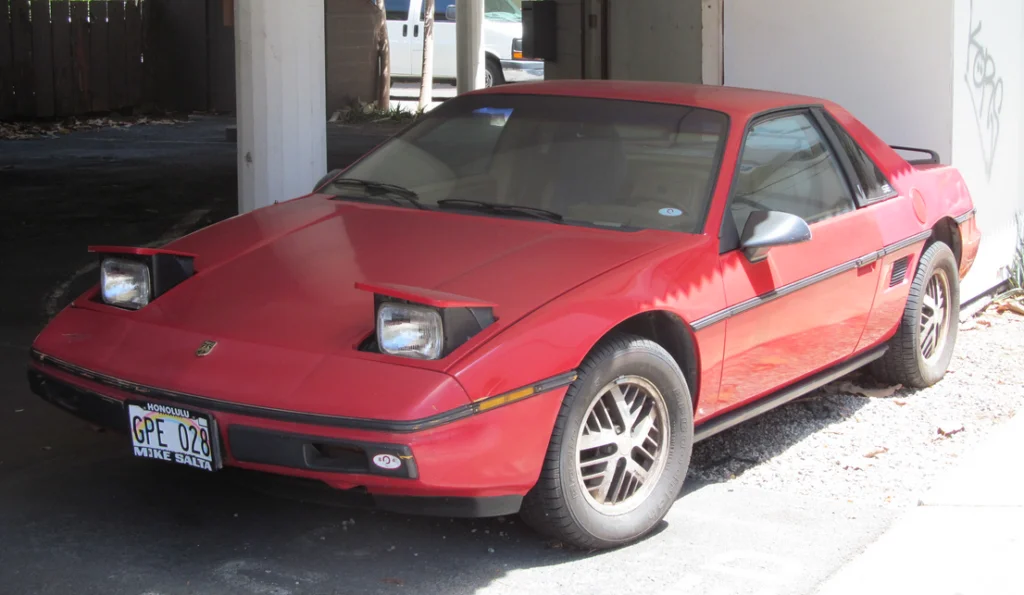
General Motors’ first and only mass-produced mid-engine car arrived with tremendous promise, featuring innovative construction with a plastic body over a space frame, stylish wedge-shaped design, and an affordable price point that made exotic car configuration accessible to average buyers. The Fiero’s handling was praised for its balance and responsiveness, while the mid-engine layout created a driving experience completely different from typical American cars of the era. The GT model’s fastback styling and enhanced performance made it a particularly desirable variant.
Tragically, the Fiero’s development was compromised by GM’s internal politics, with the car initially marketed as an economy commuter to avoid competing with the Corvette, resulting in it being saddled with the anemic “Iron Duke” four-cylinder engine producing just 92 horsepower. More seriously, the car became notorious for engine fires caused by connecting rods puncturing the block and spilling oil onto hot exhaust components. By the time Pontiac finally perfected the Fiero’s suspension and performance for the 1988 model year, the damage to its reputation was irreparable, and GM canceled the model just as it had reached its potential—a decision that makes enthusiasts wonder what might have been.
13. Maserati Biturbo (1981-1994)
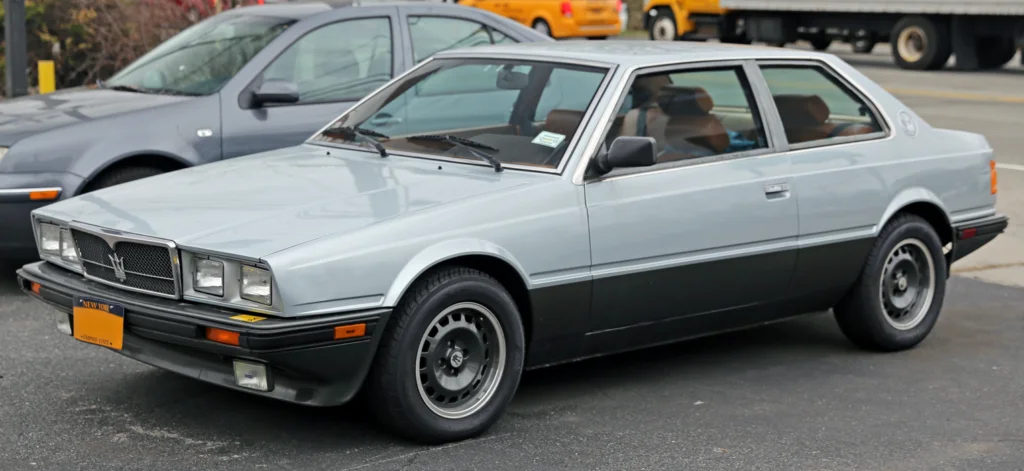
The Biturbo represented Maserati’s attempt to create a more accessible luxury sports sedan, bringing the exotic Italian marque to a wider audience with a compact package featuring elegant styling, a luxurious leather interior, and innovative twin-turbo technology. When functioning properly, the car delivered impressive performance for its era, with the small-displacement V6 producing surprising power thanks to its twin turbochargers. The handsome, understated design by Pierangelo Andreani offered European sophistication without the flashiness of some competitors.
Unfortunately, the Biturbo earned a reputation as one of the least reliable exotic cars ever produced, with cooling system failures, electrical gremlins, fragile turbochargers, and carburetion issues that could leave owners stranded with alarming regularity. The complex fuel delivery system combining carburetors with turbocharging was particularly problematic, requiring expert maintenance that was difficult to find outside specialized dealerships. Rust protection was abysmal, with many examples deteriorating rapidly in less than perfect climates. The Biturbo nearly bankrupted Maserati and damaged the brand’s reputation so severely that it took decades to recover, making it the perfect example of how cutting corners on quality control can destroy even the most prestigious automotive nameplates.
These automotive icons of the ’70s and ’80s remind us that innovation often comes with growing pains, and style doesn’t always guarantee substance. Yet despite their flaws—or perhaps because of them—these vehicles have secured their places in automotive history. Their problems have become part of their stories, oddly enhancing rather than diminishing their collectibility as time passes. Today, many of these once-problematic vehicles command premium prices from nostalgic buyers willing to overlook engineering shortcomings for the chance to experience the unique character these flawed gems provide—proof that sometimes our most complicated relationships are with the very machines designed to make our lives simpler.


